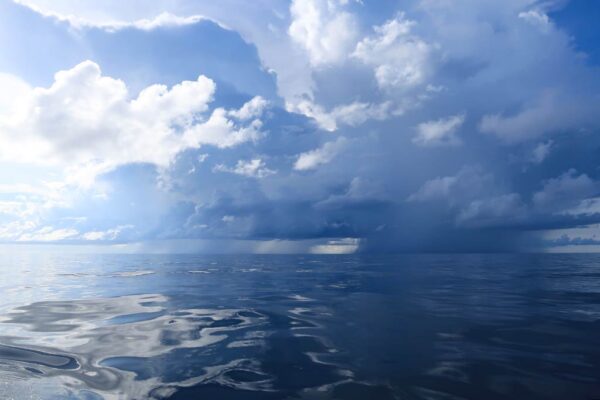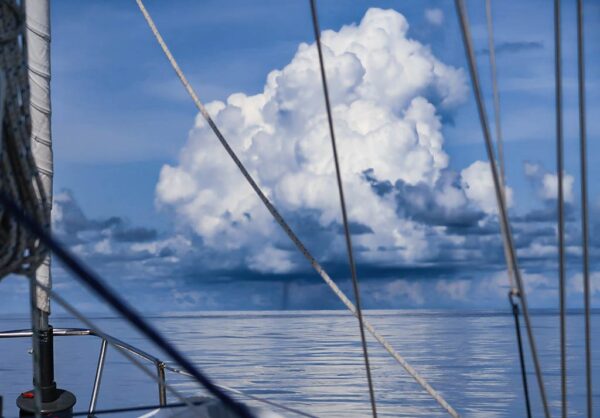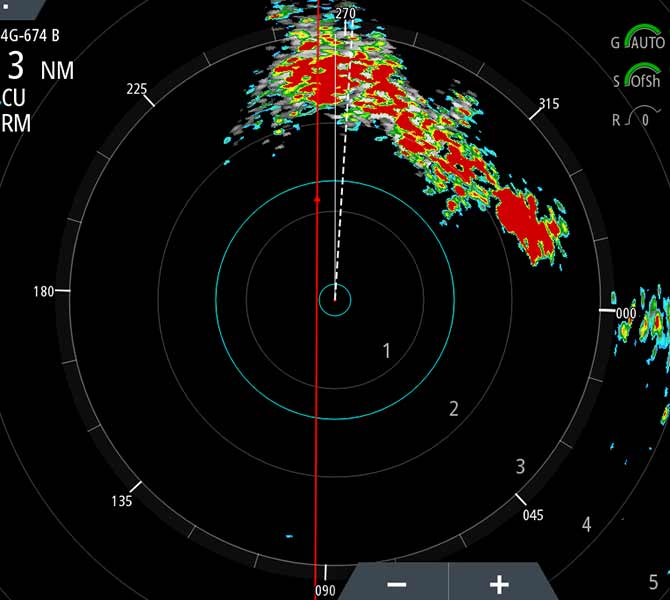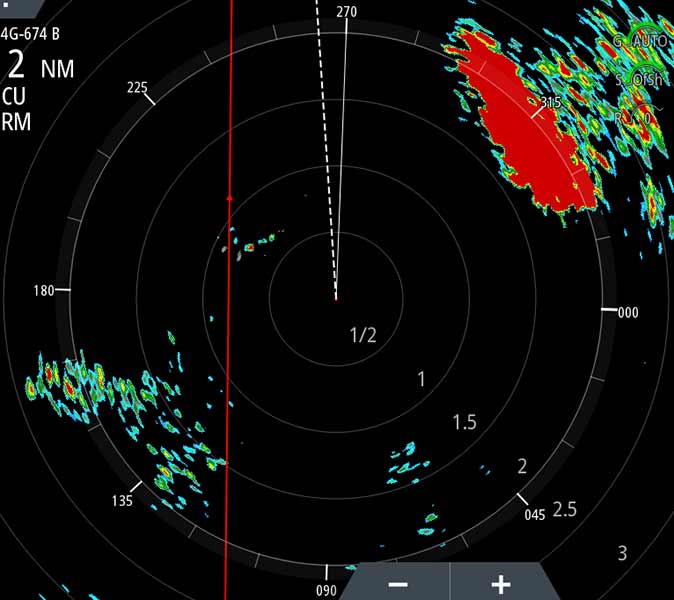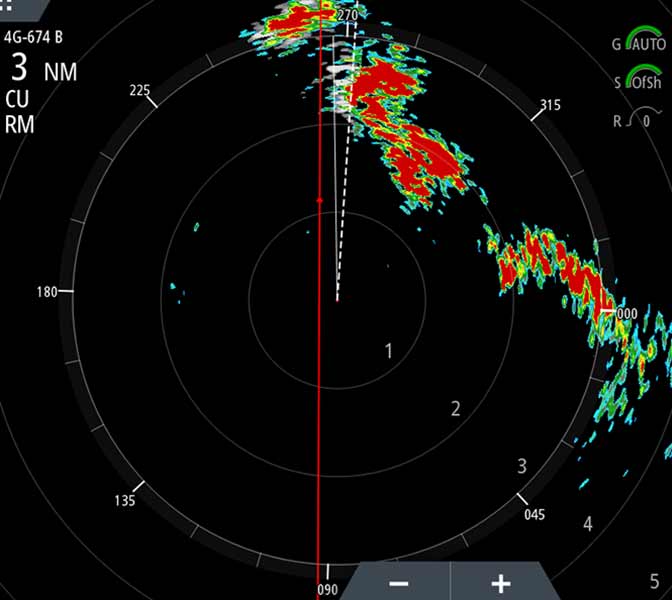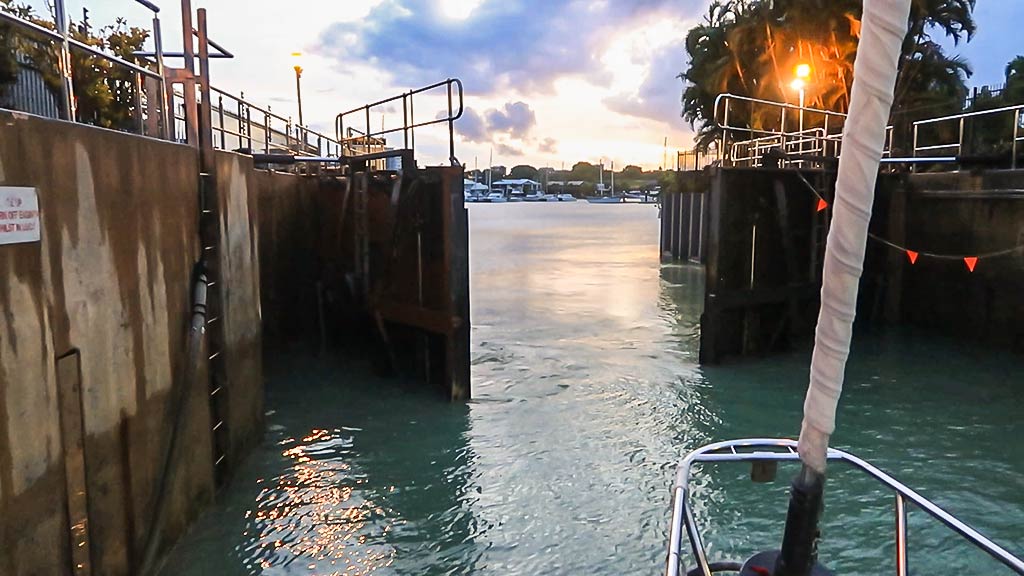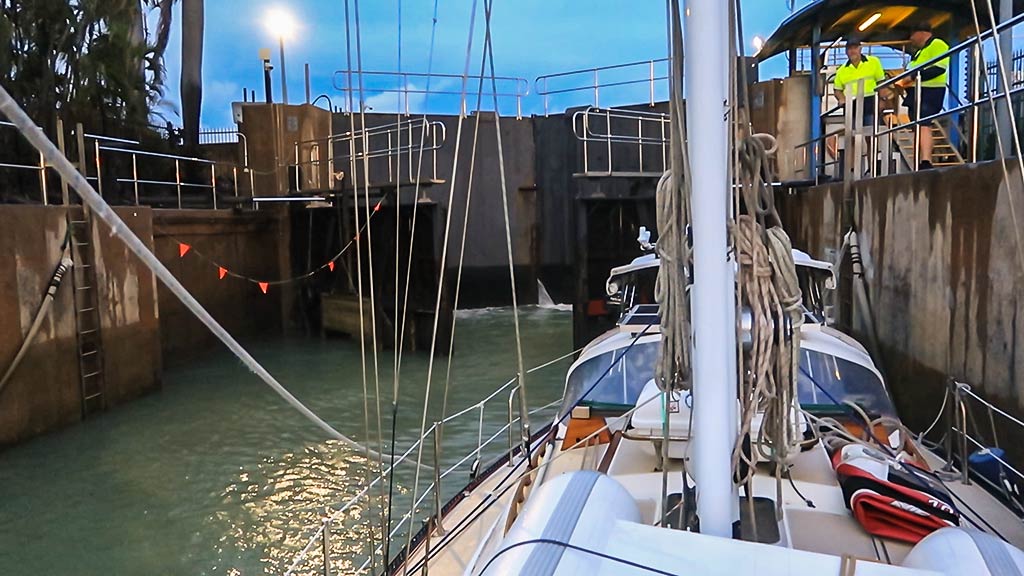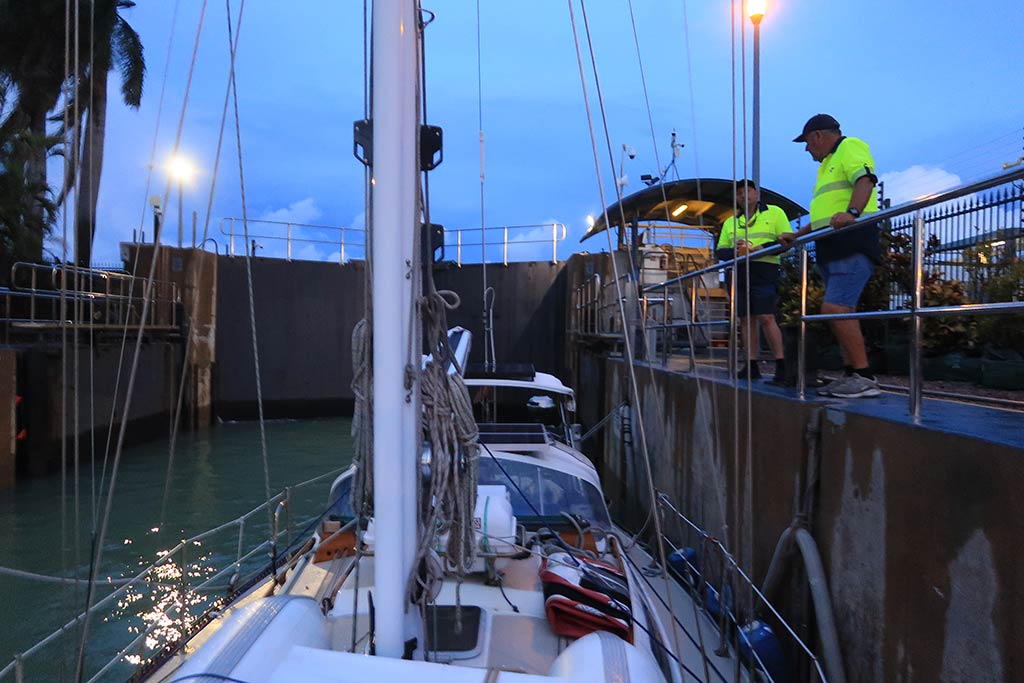December 24, 2022
Well, where to start. I guess with the most dramatic part of our six day passage from Thursday Island to Darwin, Australia.
The day before we left, we saw a low forming near Darwin. On departure day, it was gone (on GFS GRIBs). This tends to happen and most often, it comes back. It seems that the GFS forecast is often more accurate ten days out than it is two days out. And it was about two days out before the low showed up again. It didn’t look to serious and wasn’t even on the GMDSS (Global Marine Distress and Safety System).
It became apparent that we’d have some higher winds and rougher seas for our last day but most of that would be traveling between Melville Island and the Don Peninsula so we didn’t expect bad seas. Both the wind and seas were forecast to be behind us also making this less severe.
Well, weren’t we wrong (and the forecasts as well). When we finally got in, we were told that we’d just danced with cyclone Ellie. Oh crap!!! It had only been declared a cyclone at about 10PM – when we were just six hours out from Darwin.
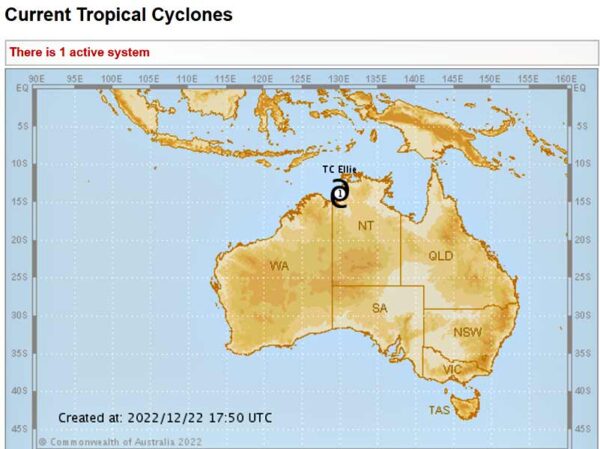
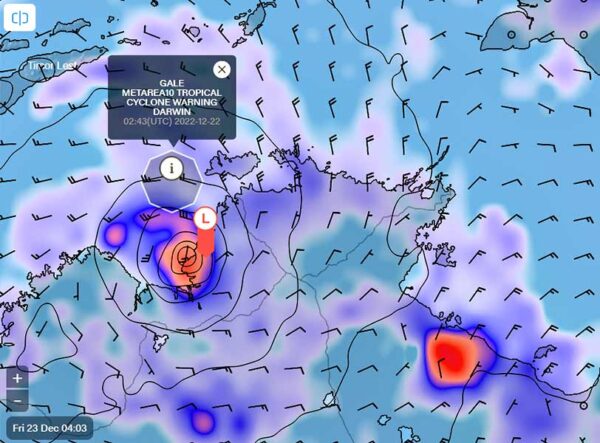
It really wasn’t that bad. What had become Ellie was just another complicating factor in a difficult arrival. The tidal range in this part of Oz is about 8 meters or 26 feet. That big tidal range produces a ton of current. I’d studied several posts about how to time and navigate these currents. We were supposed to hit the channel entry about 4 hours before Darwin high tide. That wasn’t in the cards as we got there at almost exactly the wrong time.
There was nowhere to hold up until the “right time” as the wind was now from the north and we could find no likely anchorage to provide any protection from that direction. We decided to start in and see how it went.
At first it wasn’t that bad. We only had about a knot of current against us. Since it was wind and waves against current, it made the seas worse than they’d have otherwise been. Oh well.
An hour later, the current was up to about 3 knots against us. Keep in mind that this is about a 100 mile entry into Darwin. With our five knots through the water turning into 2 knots over ground, we were looking at 50 hours, but hey, the tide wouldn’t be against us for that long – it had to turn around, right? We considered it “waiting at anchor while underway.”
Here’s a map with the “approach” to Darwin…
After about four hours, the current eased, then it worked its way up to 3 knots with us. Yippee! Now, according to some jack ass who wrote a blog post about how to navigate into Darwin, we’d ride the current all the way in! Nope. We looked at the current graphs on our charts and it was easy to see that there was no way that was going to happen.
Sure enough, after a nice, fast ride at up to 8 knots, we were back to “at anchor while underway” and making 2 knots. Oh well, it would ease and then turn around in another 4 hours or so. It did.
During this long ride into Darwin, probably 20 hours or more, we had one squall after another. Winds got as high as 38 knots with sometimes very heavy rain. The worst was on the penultimate leg into the marina with seas and wind on the beam, constant squalls, and massive waves. Some of the squalls brought the heaviest rains I think I’ve ever seen. They were “pull over to the side of the road and wait for them to pass” heavy. If only we could have done that!
Below, a small gallery showing some of the squalls on radar…
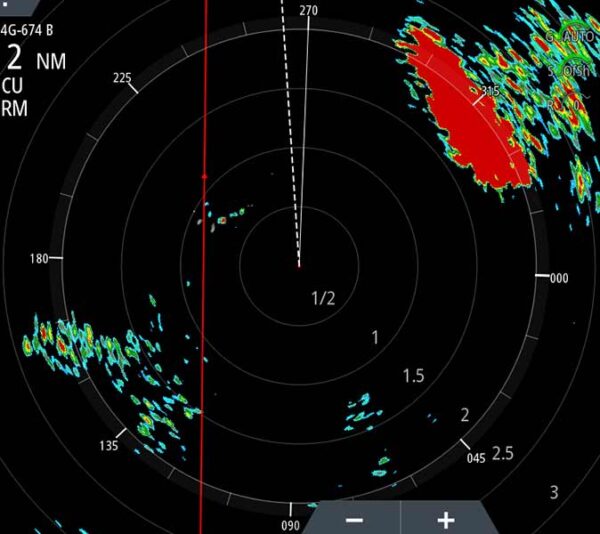
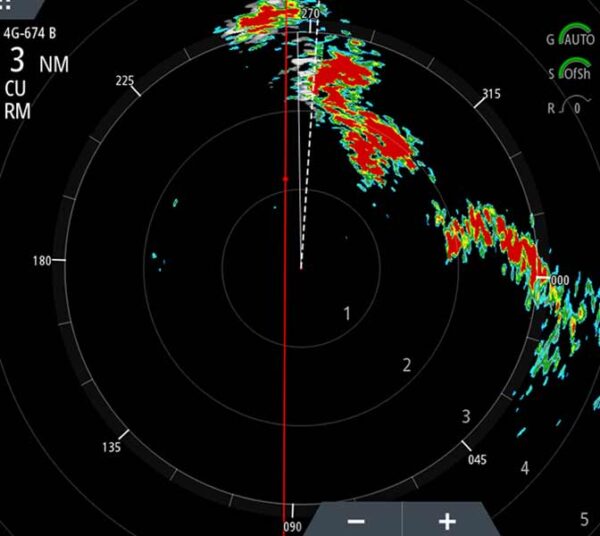
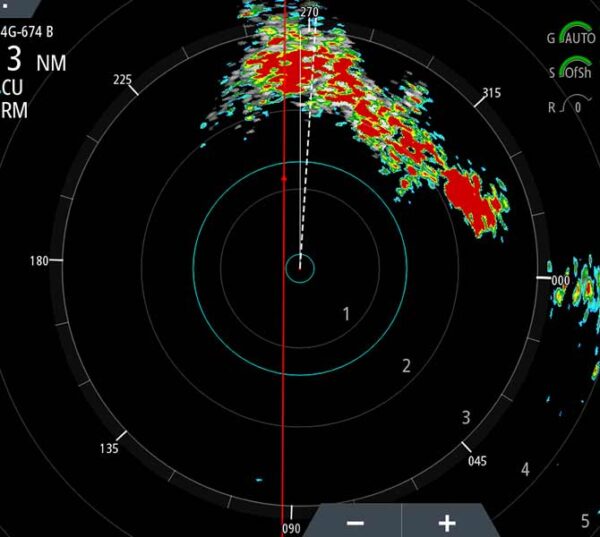
And this last one Cyndi took of our chartplotter with her camera. This was at one of the hardest downpours.
We turned downwind for the final leg and that made life better, but the rain got even heavier. At one point, there was a ship coming out of the channel that we could only see on AIS and Radar (amongst the rain clutter). When we passed by it, it was like a ghost ship coming out of the downpour. Spooky.
OK, now the fun stuff. It was 4 AM, we were at the end of a six day passage and completely infected with passage-brain, coming into a strange harbor with no moon (not that it would have shown any light through the heavy clouds anyway), with a complicated entry, nowhere to anchor to wait for daylight or easing conditions. Oh well, “let’s go for it” we psychically said to each other, and we did.
The most difficult part from a boat-handling standpoint was the last entry into the basin where we’d have to wait for an aquatic biosecurity check and a thru-hull treatment that would require us to stay at the dock for 10 hours. Sometimes, places that look small to me on a chart turn out to be quite large. Not this time. It was a tiny basin, with swells coming in, a small spot to tie up to on the pontoon and a very tricky entry in the pitch black. Yea, I guess you’re right, not smart!
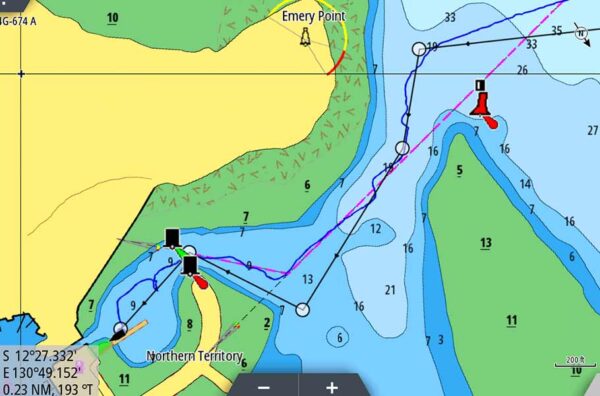
Here’s our track (blue line) into the basin. Our autopilot handles almost anything but not this, with wild currents and swells pushing us all over the place. It was clear that the autopilot wasn’t going to cut it as we were being swept towards the reef. I took over and was steering almost lock to lock to try to stay on course.
We didn’t bump the rocks or reef (proof there is an all-powerful entity looking after fools, idiots and Legacy). We got fendered up and tied off for a couple hours sleep before our visit from the divers for our treatment. (It would have been almost four hours sleep, but we deduct the requisite two hours of drinking from that time. Wow, did we need it!)
We were all set to go into the lock at 10 PM (yep, a lock because of the huge tidal range here) but we were just too out of it, both from lack of sleep and maybe a little from our celebration bottle of Champagne!
[Confession from Cyndi: it wasn’t the celebration champagne from our arrival but the fact that while Rich napped that afternoon while we waited out our 10-hour thru hull treatment, I had some red wine, thinking I’d then get some sleep and be ready at 10pm. As it turned out, I certainly slept, but I underestimated how much, in my tired state, the wine would affect me. Rich was OK to go, but I was not as OK as I needed to be, especially since conditions were rather windy. A catamaran behind us on the quarantine dock went through and had a heck of a time controlling his boat. Frankly, it’s just as well we didn’t go as we may have been going through the lock with him.]
It didn’t seem smart to tackle something we’d never done before in our current state (and we figured we’d used up all our luck just getting in!). We rescheduled for 6 AM. Wow, it was not fun when the alarm went off. Nevertheless, all went well. Here are some pics of us in the lock…
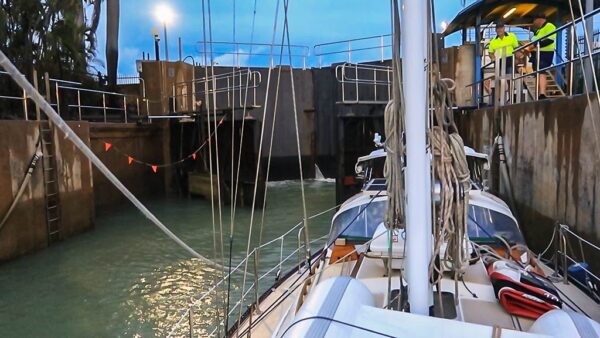
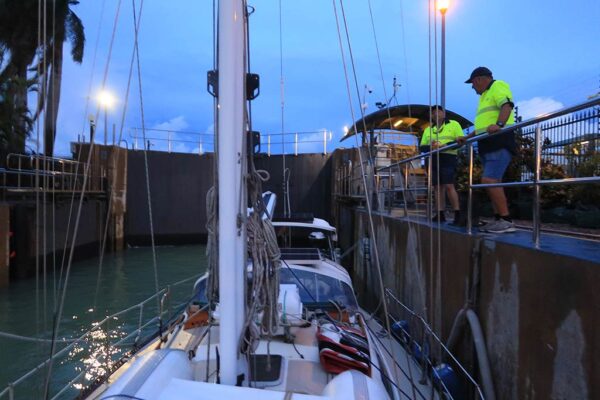
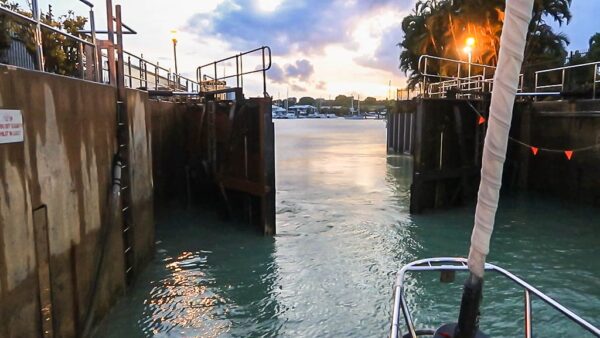
The trip from the lock to our berth was short and easy and the guys from the marina ran around so that they’d be there to catch our lines. Nice people!
Memories from the passage up to the Cyclone
Leaving Thursday Island was mostly uneventful but there was a lot of shipping traffic to dodge. There was no wind and we didn’t expect any for at least four days.
There were squalls every day and lightning every night, all around us but not usually very close. At one point, this squall looked like a waterspout, but I don’t think it was as the sea was flat and there was no wind.
Most of the squalls were windless (until we got close to Darwin, that is). We got a little rain off and on but not much (until we got close to Darwin, that is).
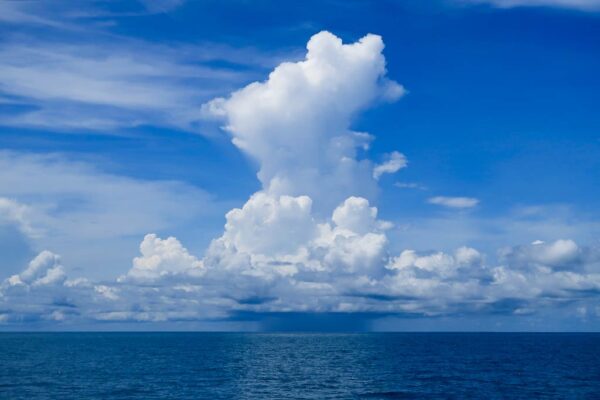
Fuel was an issue. We filled up at Thursday Island and had 87 gallons onboard (330 liters). The trip was to be 730 miles so our normal rate of 10 miles per gallon, we could theoretically motor the whole way. The problem is that my 10 mpg figure was always with a little wind assisting us and there was no wind for the first four days.
The first two days, I ran the engine at 2200 rpm and was going through fuel way too fast. I dropped the throttle back, sometimes 1800 and sometimes 2000 rpm. This helped with fuel consumption but it was still looking touch-and-go.
We finally got a little wind and actually sailed for a few hours, but while there wasn’t usually enough wind to turn off the engine, there was a little wind assistance for motor-sailing which helped our fuel situation a lot. We arrived with 16 gallons to spare.
(While we had 16 gallons onboard, 10 of those were in jugs but, in the final hours of our passage, it was far too rough to get those into the tank without also getting some of the ocean in there as well. Good lesson: get the fuel from the jugs into the tank as soon as conditions are good enough to do it.)
The passage was about six days but to me, it felt like one of our longest and I don’t really know why. I just didn’t seem to be able to keep track of the days or dates and was constantly counting the days on my fingers.
The last day was the hardest, not just because of the storm, but because I get last-day syndrome as we approach a new destination. Usually, it’s just for the final approach, 30 miles or so, but because the final approach to Darwin was over 100 miles, last-day syndrome deprived me of sleep for 20 plus hours.
Oh well, we’re here now. Time to explore, eat out at new restaurants and see new sights. Next up, Indonesia, but we’re not sure when now. We think we might hang out here for a while. We know we’ll be here for at least a month and during that time, we’ll firm up our Indo plans. We could be in Darwin for as long as four or five months.
While Darwin is in the Cyclone zone, the marina we’re in is a registered cyclone haven, so that feels good, but we still don’t want to experience a big one close up and personal.
-Rich


